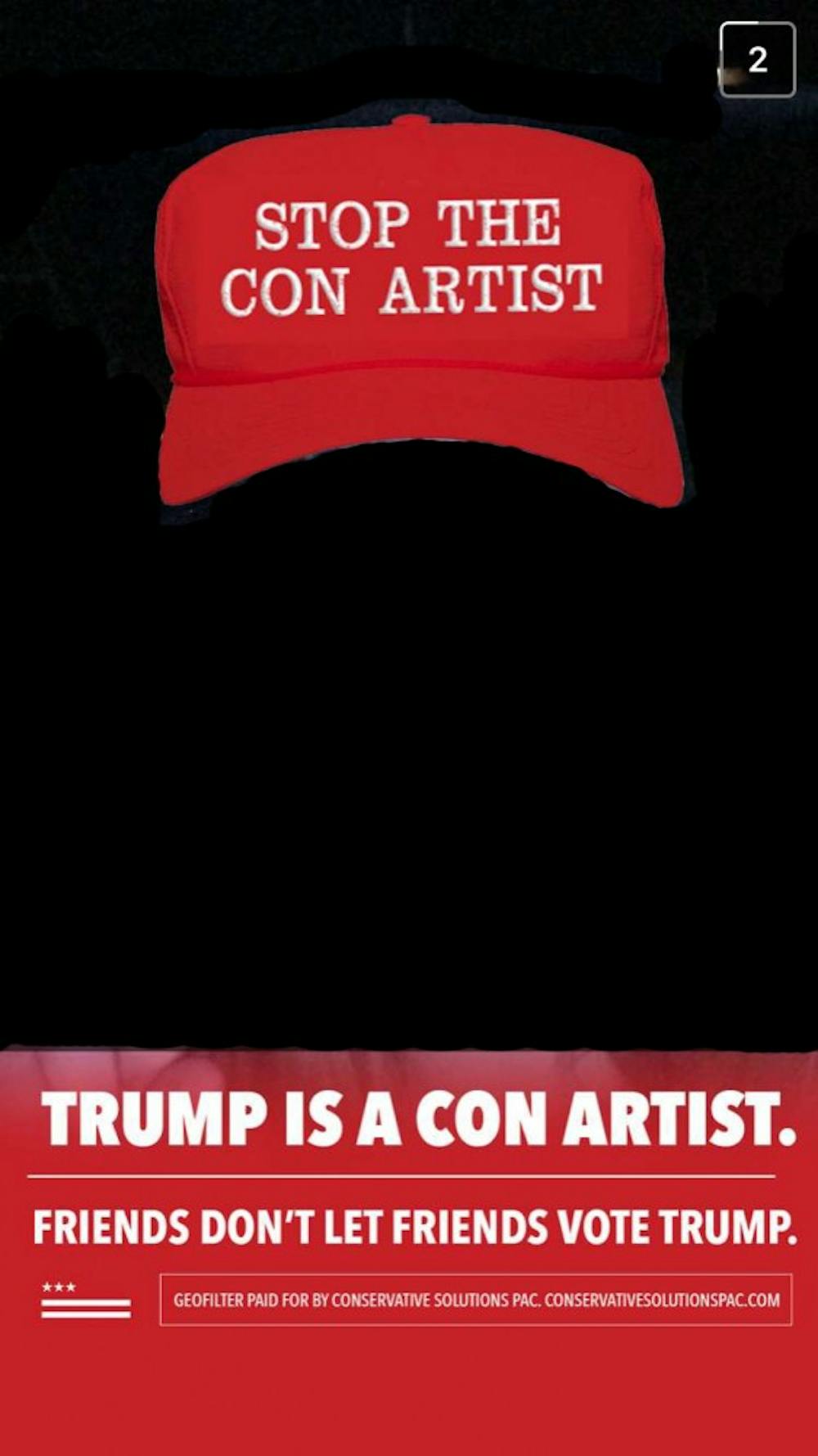Conservative Solutions PAC used Snapchat filters as a political advertisement this weekend in an effort to target university students as part of their campaign supporting Sen. Marco Rubio (R-FL), a presidential candidate.
The Snapchat filters depicted Republican presidential candidate Donald Trump as a con artist, with the caption “Trump is a con artist. Friends don’t let friends vote Trump.” Jeff Sabowsky, spokesperson and advisor for Conservative Solutions PAC, said the organization launched the Snapchat filter in an effort to reach younger voters.
“Leading up to Super Tuesday, we wanted to engage younger voters in creative ways as we attempt to slow down Trump’s momentum,” Sabowsky said. “Snapchat users were able to show their friends, other voters and snapchat followers how they felt about Donald Trump’s attempt to con the American people.”
Sabowsky said more than 1.5 million people viewed snapchats featuring one of the anti-Trump filters. On Sunday alone, Snapchat users applied the filter almost 150,000 times in Virginia, Sabowsky said.
“Specifically in the Charlottesville area, we offered U.Va. students a chance to show that they are one of many who are voicing their opposition to Donald Trump,” Sabowsky said. “We will be talking to voters anywhere and everywhere they’re getting their news about the presidential race to ensure Donald Trump’s attempts to con the American public don’t work.”
Although the Conservative Solutions PAC’s strategy was to engage with young voters receiving political information in a non-traditional way, critics doubt the effectiveness of social media as a campaign strategy.
Kelly Kaler, a first-year Batten graduate student and former fellow with Hillary for America in New Hampshire, said it is hard to determine whether the Snapchat campaign will translate into real results.
“The best campaign strategy is not relying on social media; it’s not relying on Snapchat,” Kaler said. “The best strategy is people.”
The emphasis on human interaction is a strategy Kaler said she used while working on former Secretary of State Hillary Clinton’s presidential campaign in New Hampshire.
“A lot of what I did in New Hampshire was door-to-door conversations [and] phone conversations with voters. Those one-on-one interactions [are] what increases turnout, not a Snapchat filter or a slogan,” Kaler said. “It’s really just about telling your personal story and getting your message to people about why you’re voting for Hillary Clinton or any other candidate.”
Social media, however, is one of the ways in which candidates can engage with younger voters, which is essential for the 2016 presidential race, Kaler said.
“Snapchat is kind of a millennial social media outlet,” Kaler said. “It’s no secret that all of the campaigns are trying to attract millennials because it’s a huge block of voters this year.”
Kaler said Hillary for America also used social media, specifically Instagram, as a fun way to interact with younger voters. In addition, Clinton has a Snapchat account which she uses to engage with followers.
Regardless of social media strategies, Kaler said it is most important to take part in the election process.
“This is a really important election, and I hope people get out to vote,” Kaler said.







